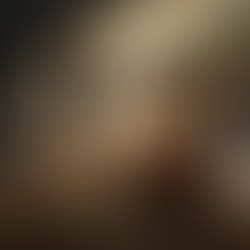"Echo" Filmmaker: Niccolo Cosme
- OUR PRIDE

- Oct 13, 2024
- 5 min read
A Creative's Journey into AI Art

My name is Niccolo Cosme, I am a photographer, visual artist and creative director. I started photography right after finishing Communication Arts at the De La Salle University - Dasmariñas in 2001. I specialize in portraits and conceptual photography which highly uses digital technology in achieving hyper-realistic and surreal composite images, a style I am known for. I have won several competitions in my career which include winning in an international competition topping more than 200 participants around the world. Recently, I've been delving into AI image generation and AI animation, and I'm excited to share my insights with you today. | The first time I encountered Midjourney, I was completely amazed by how technology could generate such stunning and awe-inspiring images through simple prompts. My introduction to this AI tool came through photographer Jake Verzosa’s Instagram posts, which featured vintage portraits infused with futuristic elements and a surreal, otherworldly vibe. Intrigued, I discovered that these images were all AI-generated using Midjourney. At that moment, I realized I needed to dive into this technology—either I embrace it or risk being left behind, and I certainly didn’t want to be left behind. So, I embarked on a journey to understand what Midjourney is, how it operates, and the limits of its creativity and accuracy. |
Website: niccolocosme.com Facebook: facebook.com/cosmeniccolo Instagram: @niccolocosme
"Alingawngaw" (Echo)Trailer
Watch in the Festival: Experimental Short Films
The First Prompts
 | “A realistic photo of the sky in the desert with nimbostratus clouds and the sun peeking through, with sun rays shining out from the clouds. Crisp, clean, and dramatic.” This was my very first prompt in Midjourney. The result was a hyper-realistic, cinematic image that would normally require meticulous layering of various images in Photoshop. What amazed me was how quickly Midjourney rendered this image—just a few minutes. This excitement fueled my desire to create more images, particularly ones that explored our pre-colonial and colonial past. My fascination with this period stems from the fact that much of our identity was lost during the Spanish colonization. |
 | My next prompts reflected this obsession: “A realistic photo of the Philippines in the 1700s, a plaza with a wooden church, and people going about their daily lives.” Although there’s no way to verify the historical accuracy of these images, they offered a glimpse into how my hometown might have looked in the 1700s. This inspiration grew so strong that I wrote a full-length movie storyline about two sisters during the Spanish missionaries' early evangelization of my home town Kawit, Cavite, in 1624. |
 | One of my prompts was: “1700s, a young Filipina, about 15 years old, her hair being braided by her sister at a nearby river bank near their house. Warm, glowing, nurturing” Although the generated image didn’t exactly match my vision—the sisters weren’t braiding hair — it captured the warmth and sisterly interaction I was aiming for. |
Magic Spells
As I delved deeper into AI image generation, I learned a few key lessons.
First, the success of an image largely depends on the creativity and specificity of your prompts. Crafting a good prompt is like casting a magic spell: you must carefully combine words and ideas, clearly expressing your intentions to achieve the desired outcome.
Second, AI image generation is still an emerging technology. I first learned about DALL-E, an AI image generator, in 2022. While it was very impressive at the time, tools like Midjourney and others have significantly advanced since then. However, these advancements aren’t without flaws — images may have missing limbs, extra fingers, or distorted faces.
These imperfections are part of the AI image generation experience, something one must accept. Recently, I began experimenting with animation using Luma AI. Seeing remarkable content online, I was excited to create moving images like scenes from a movie.
 | My first prompt for the opening scene of a short film I envisioned was: “Year 1624, the Acapulco-Manila galleon seen at sea with big waves near a peninsula, in the style of the movie 300—cinematic, dark, dramatic, high definition, realistic.” I named this project “Alingawngaw” (Echo). |
Inspired and excited, I wrote down the sequence for the short film in under 30 minutes. | I meticulously detailed how I wanted the film to begin, build up, and end. My mind was racing, and it felt like I was keeping pace with the AI. |
 | One of the prompts I used was: “Year 1624, a pre-Hispanic priestess in the Philippines, summoning the elements by the sea, her hands raised while we see the waves crashing against a nearby peninsula, in the style of the movie 300—cinematic, dark, dramatic, high definition, realistic.” |
I specifically used “pre-Hispanic” instead of “colonial” to ensure the right tone and style. The generated image was exactly what I wanted—gritty, powerful, and full of the mood. These initial prompts set the tone for the rest of the images in the short film.
I consistently used the phrase “style of the movie 300” in all my prompts to maintain a cohesive look.
As I moved forward with the project, I faced two choices: finish generating all the images first and then animate them, or generate, animate, and edit the videos simultaneously using my video editing software Filmora.
I chose the latter, as it allowed me to see how the clips fit together in real-time. If something didn’t work, I could either generate a new image or re-animate it.
However, Luma AI sometimes failed to meet my expectations, which was frustrating, especially considering the cost of subscriptions to these AI platforms. For example, in a clip where “the priest is preaching, telling people to repent, pointing at the fire and then to the sky,” the animation was limited—the priest barely moved, but there was a dramatic zoom-out and intense animation of the fire in the background.
I had to compromise, accepting this result. Other issues, like floating crosses or birds merging into one, were also part of the AI experience I had to accept. Although I knew these issues would likely be resolved in the future, I had to be content with what I had for now.
Each animated clip was sequenced with music and sound effects I acquired from Epidemic Sound, a music and sound subscription platform. I found a hauntingly perfect soundtrack that built from a calm chant to an explosive climax. As I added the final touches, it felt like everything was unraveling in front of me. The emotions elicited through the visual imagery—the violent waves crashing against the rocks, the fire engulfing acres of land, the haunting screech of a katutubo priestess—spoke to me. | It was as if I was there at that moment. I realized that creating something of this level in such a short time and with limited resources was only possible with AI. It may not be perfect, but is art about perfection? Or is it about how it makes you feel, how it moves and inspires you? That's what art is all about, isn’t it? Evoking emotions, telling stories, and connecting with something deeper. AI, like a new kind of brush, allows us to paint with ideas and explore new possibilities. Though not perfect, it pushes us to think differently and reach beyond what we thought was possible. |
In the hands of a storyteller, AI can become a means to preserve culture, reimagine history, and bring forgotten narratives to life. It offers a glimpse into worlds that might have been and engages us with the past, present, and future.
As I reflect on the images and animations I’ve created, I see potential for AI to democratize creativity and empower those who might not have had the means to realize their visions. In every rendered scene, there’s a collaboration between human and machine, a dialogue that challenges us to create with intention.
This story first appeared in PhilStar Global



























Comments